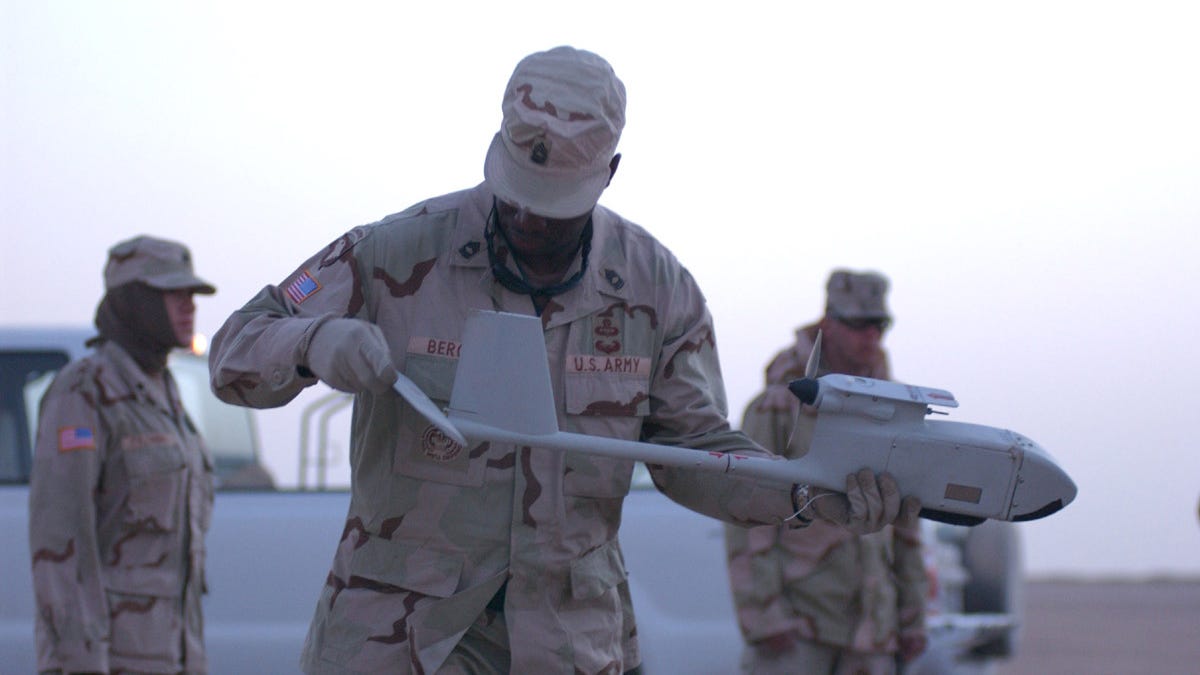Army official: UAVs are 'unsung heroes' in Iraq
U.S. military says soldiers are applauding aid from drones and other robots as they attempt to fend off enemies, scout out dangerous terrain, and stay out of harm's way.

WASHINGTON--The controversial surge in U.S. bodies to Iraq has dominated headlines in recent months, but the "unsung, unknown hero" isn't even human.
Or at least that's the assessment of Col. Donald Hazelwood, who runs the U.S. Army's unmanned aerial systems project office.
Speaking Friday at a confab here hosted by the Association for Unmanned Vehicle Systems International, Hazelwood said daily use of drones has "forever changed" the way soldiers see what's around corners, detect improvised explosive devices, and fend off enemies in Baghdad and beyond.
"It doesn't get any better that that, when soldiers tell you it's easy to operate, it's easy to train on, and it's saving lives," Hazelwood said.
Just before the surge, the U.S. Army bumped up the number of unmanned aircraft in those skies by 35 percent, Hazelwood said.
UAV use, of course, spans all of the military branches and continues to increase, officials said Friday. Overall, the Pentagon's inventory of unmanned aerial systems has leapt from about 200 in 2002 to nearly 6,000 in 2008, said Dyke Weatherington, who oversees an unmanned systems wing of the U.S. Department of Defense. For the 2008 fiscal year, the Defense Department has a $15 billion budget just for unmanned systems, and a supplemental $500 million from Congress may also be on the way.
Beyond combat uses, unmanned vehicles are also being "used to give life," said Jason Haines, a 19-year military veteran who has served as a lieutenant commander in Iraq.
On one hand, use of the drones "kept me and my men alive, that's for sure," he told conference attendees. "They kept us ahead of the game. There were no surprises to us."
On the other hand, UAVs flying high above dangerous territories are also relaying tactical information that can help protect civilians, such as humanitarian assistance crews on the ground delivering relief supplies, Haines said. The former firefighter and paramedic said he also saw promise for use of UAVs by local police and fire crews and disaster relief crews in, say, hurricane-wrecked zones. Weather watchers also say the unmanned craft can be used to fly into hurricanes to take readings in place of the people-toting aircraft that now pull that duty.
As fond as the U.S. military is of touting the growing role unmanned vehicles play in battle, officials said some dramatic changes in the technology remain necessary.
One challenge is getting the various different breeds of robot to share data with one another. Right now, for instance, a drone flying in the sky may be able to beam data to computers at a command center, but it can't necessarily integrate data with, say, a ground-based robot.
Greater interoperability would permit soldiers to gather intelligence more easily from a number of different perspectives, rather than relying on one potentially limited source, said the Defense Department's Weatherington. It would also foster more efficient operations in the long run--after all, cost, airspace, and radio spectrum constraints mean the military can afford to add only so many new vehicles over time.
Another tough issue is making sure members of the rapidly multiplying drone population don't collide with one other--and with manned aircraft. Hazelwood said he was optimistic about the prospects for more military UAVs sharing airspace above the United States. The Army has already brought down its accident rates by 60 percent each year for the last three years, he said, so at that rate, "we ought to be able to fly in national airspace and convince the American public by 2012."